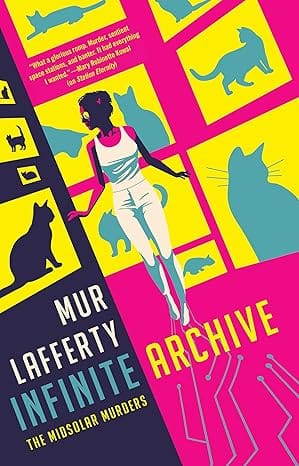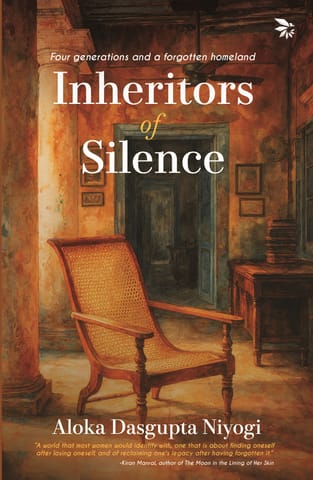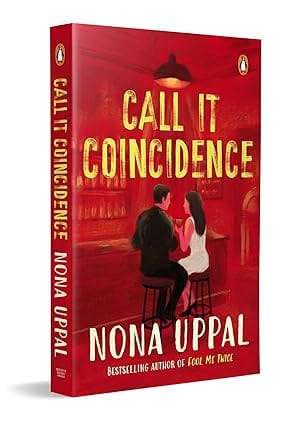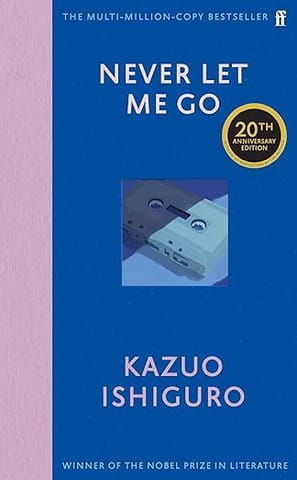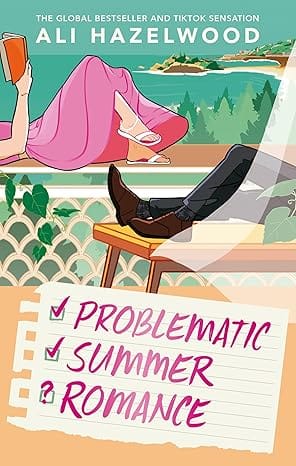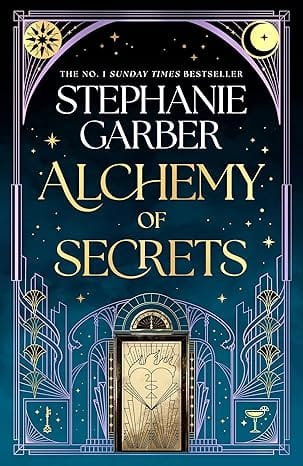WELCOME TO MIDLAND BOOK SHOP!
SHOP FOR
- Non-ficton
- Non-ficton
- Contemporary Fiction
- Contemporary Fiction
- Children
- Children
- Comics & Graphic Novels
- Comics & Graphic Novels
- Non-Fiction
- Non-Fiction
- Fiction
- Fiction
Shop No.20, Aurobindo Palace Market, Hauz Khas, Near Church +91 9818282497 | 011 26867121 110016 New Delhi IN
Midland The Book Shop ™
Shop No.20, Aurobindo Palace Market, Hauz Khas, Near Church +91 9818282497 | 011 26867121 New Delhi, IN
+919871604786 https://www.midlandbookshop.com/s/607fe93d7eafcac1f2c73ea4/677cda367903fd013d69b606/without-tag-line-480x480.png" [email protected]9789365238884 68b97c53a24d6306b34886b5 The Undead Ghoul And The Clever Raja Twenty-five Tales Of The Vetala Panchavimshati https://www.midlandbookshop.com/s/607fe93d7eafcac1f2c73ea4/68b97c54a24d6306b34886bd/714dkdbuwcl-_sy425_.jpg 9789365238884
The great Raja Vikramaditya is assigned a task by the tantric yogi Kshantisheela. He is told by the holy man to bring him a corpse that is hanging on a shisham tree. This leads to a battle of wills between the raja and the vetala that has possessed the corpse. Every time the raja tries to haul the corpse to the tantric, the ghostly trickster begins to narrate a tale that he says will end with a riddle that the raja must solve: all that the vetala tells the raja is that if he knows the answer and doesn’t give it, his head will shatter into a thousand pieces. The stories he tells and answers he demands are the vetala’s way of testing the raja to make sure he is worthy of the rewards the vetala intends to bestow on him (instead of on the yogi, whom the vetala has deemed unworthy). Will the clever raja finally manage to carry the ghoul to the tantric yogi? Will he be able to outmanoeuvre the vetala? Will he be able to negotiate the lies, intrigues, and deceptions hurled at him?
Bestselling author Meena Arora Nayak brings to vivid life the ancient text of Vetala Panchavimshati in The Undead Ghoul and the Clever Raja. Drawing from multiple sources—including the versions of Shivadasa and Jambhaladatta, Somadeva’s Kathasaritsagara, and Lallu Lal’s Baital Pachisi—she weaves together the best elements of this extraordinary feat of the imagination. In all, there are twenty-four curveball tales narrated by the vetala—the frame story is the twenty-fifth tale. At one level, this is a classic book of horror—the descriptions of secret rituals that resuscitate the dead, a chilling prologue about murder and deceit, and the backdrop of a cremation ground succeed in creating an eerie atmosphere and the vetala is a sinister and creepy figure.
However, what makes this a masterpiece that transcends its genre is the manner in which the tales range across and probe subjects like life, love, sexuality, human desire, the vagaries of human nature and death (especially unnatural ones like murder and suicide). The blend of suspense, wit, and philosophical enquiry to be found in this masterful retelling of one of India’s most intriguing works of classical literature should win it a wide audience of contemporary readers.
Bestselling author Meena Arora Nayak brings to vivid life the ancient text of Vetala Panchavimshati in The Undead Ghoul and the Clever Raja. Drawing from multiple sources—including the versions of Shivadasa and Jambhaladatta, Somadeva’s Kathasaritsagara, and Lallu Lal’s Baital Pachisi—she weaves together the best elements of this extraordinary feat of the imagination. In all, there are twenty-four curveball tales narrated by the vetala—the frame story is the twenty-fifth tale. At one level, this is a classic book of horror—the descriptions of secret rituals that resuscitate the dead, a chilling prologue about murder and deceit, and the backdrop of a cremation ground succeed in creating an eerie atmosphere and the vetala is a sinister and creepy figure.
However, what makes this a masterpiece that transcends its genre is the manner in which the tales range across and probe subjects like life, love, sexuality, human desire, the vagaries of human nature and death (especially unnatural ones like murder and suicide). The blend of suspense, wit, and philosophical enquiry to be found in this masterful retelling of one of India’s most intriguing works of classical literature should win it a wide audience of contemporary readers.
About the Author
Meena Arora Nayak is a former professor of English and Mythology. She is the author of the bestselling The Blue Lotus: Myths and Folktales of India. Her other books include the novels
in stockINR 559
1 1
Email ID already exists!
Your Current password is incorrect
Password Updated Successfully
Thanks for your Feedback
The Undead Ghoul And The Clever Raja Twenty-five Tales Of The Vetala Panchavimshati
ISBN: 9789365238884
₹559
₹699 (20% OFF)SIZE GUIDE
Sold By: Hauz Khas - Aurobindo Market
Details
- ISBN: 9789365238884
- Author: Meena Arora Nayak
- Publisher: Aleph Book Company
- Pages: 224
- Format: Hardback
Book Description
The great Raja Vikramaditya is assigned a task by the tantric yogi Kshantisheela. He is told by the holy man to bring him a corpse that is hanging on a shisham tree. This leads to a battle of wills between the raja and the vetala that has possessed the corpse. Every time the raja tries to haul the corpse to the tantric, the ghostly trickster begins to narrate a tale that he says will end with a riddle that the raja must solve: all that the vetala tells the raja is that if he knows the answer and doesn’t give it, his head will shatter into a thousand pieces. The stories he tells and answers he demands are the vetala’s way of testing the raja to make sure he is worthy of the rewards the vetala intends to bestow on him (instead of on the yogi, whom the vetala has deemed unworthy). Will the clever raja finally manage to carry the ghoul to the tantric yogi? Will he be able to outmanoeuvre the vetala? Will he be able to negotiate the lies, intrigues, and deceptions hurled at him?
Bestselling author Meena Arora Nayak brings to vivid life the ancient text of Vetala Panchavimshati in The Undead Ghoul and the Clever Raja. Drawing from multiple sources—including the versions of Shivadasa and Jambhaladatta, Somadeva’s Kathasaritsagara, and Lallu Lal’s Baital Pachisi—she weaves together the best elements of this extraordinary feat of the imagination. In all, there are twenty-four curveball tales narrated by the vetala—the frame story is the twenty-fifth tale. At one level, this is a classic book of horror—the descriptions of secret rituals that resuscitate the dead, a chilling prologue about murder and deceit, and the backdrop of a cremation ground succeed in creating an eerie atmosphere and the vetala is a sinister and creepy figure.
However, what makes this a masterpiece that transcends its genre is the manner in which the tales range across and probe subjects like life, love, sexuality, human desire, the vagaries of human nature and death (especially unnatural ones like murder and suicide). The blend of suspense, wit, and philosophical enquiry to be found in this masterful retelling of one of India’s most intriguing works of classical literature should win it a wide audience of contemporary readers.
Bestselling author Meena Arora Nayak brings to vivid life the ancient text of Vetala Panchavimshati in The Undead Ghoul and the Clever Raja. Drawing from multiple sources—including the versions of Shivadasa and Jambhaladatta, Somadeva’s Kathasaritsagara, and Lallu Lal’s Baital Pachisi—she weaves together the best elements of this extraordinary feat of the imagination. In all, there are twenty-four curveball tales narrated by the vetala—the frame story is the twenty-fifth tale. At one level, this is a classic book of horror—the descriptions of secret rituals that resuscitate the dead, a chilling prologue about murder and deceit, and the backdrop of a cremation ground succeed in creating an eerie atmosphere and the vetala is a sinister and creepy figure.
However, what makes this a masterpiece that transcends its genre is the manner in which the tales range across and probe subjects like life, love, sexuality, human desire, the vagaries of human nature and death (especially unnatural ones like murder and suicide). The blend of suspense, wit, and philosophical enquiry to be found in this masterful retelling of one of India’s most intriguing works of classical literature should win it a wide audience of contemporary readers.
About the Author
Meena Arora Nayak is a former professor of English and Mythology. She is the author of the bestselling The Blue Lotus: Myths and Folktales of India. Her other books include the novels
User reviews
NEWSLETTER
Subscribe to get Email Updates!
Thanks for subscribing.
Your response has been recorded.

India's Iconic & Independent Book Store offering a vast selection of books across a variety of genres Since 1978.
"We Believe In The Power of Books" Our mission is to make books accessible to everyone, and to cultivate a culture of reading and learning. We strive to provide a wide range of books, from classic literature, sci-fi and fantasy, to graphic novels, biographies and self-help books, so that everyone can find something to read.
Whether you’re looking for your next great read, a gift for someone special, or just browsing, Midland is here to make your book-buying experience easy and enjoyable.
We are shipping pan India and across the world.
For Bulk Order / Corporate Gifting
 +91 9818282497 |
+91 9818282497 |  [email protected]
[email protected]
Click To Know More
INFORMATION
QUICK LINKS
ADDRESS
Midland Book Shop - Hauz Khas
Shop No.20, Aurobindo Palace Market, Near Church, New Delhi
Shop No.20, Aurobindo Palace Market, Near Church, New Delhi





